Featured Articles
Will Adamek-Cunningham II Float As Network TV Test Balloon?

Adamek is a 4 to 1 favorite, as the oddsmakers figure he is more natural at heavyweight than Cunningham is. Readers, who do you like in this rumble? (photo by Kubikfoto)
Boxing on free, over-the-air network television is going back to the future for the second consecutive weekend. This past Saturday afternoon, CBS floated a 235¼ -pound test balloon – that would be the combined weights of IBF bantamweight champion Leo Santa Cruz and challenger Alberto Guevara, who duked it out in the Los Angeles Sports Arena — with Santa Cruz retaining his title on a wide unanimous decision.
This Saturday afternoon, at the Sands Casino Resort in Bethlehem, Pa., heavyweights Tomasz Adamek and Steve Cunningham collectively are a 430-pound balloon attempting to lift off in what might be an even more consequential experiment to see if fights and fighters still have a place in the non-cable and non-satellite sports universe.
If the NBC ratings are reasonably favorable – and they just might be, if Adamek and Cunningham generate anything close to the heat of their scintillating Dec. 11, 2008, slugfest, in which Adamek claimed Cunningham’s IBF cruiserweight title on a split decision — boxing on Saturday afternoons may again be revived after long years of being almost exclusively consigned to cable, premium cable and pay-per-view.
Not that anyone would care to admit it, but the future of an increasingly marginalized sport could well hinge on whether those potentially larger audiences have their appetites whetted by the sight of gloved boxers pounding away at one another on a roped-off swatch of canvas.
“It’s a great matchup,” co-promoter Kathy Duva, CEO of Main Events, said of Adamek-Cunningham II. “When their first fight (which was staged at the Prudential Center in Newark, N.J., and televised by Versus) ended, I remember saying, `We just promoted the two best cruiserweight bouts of all time,’ the other, in her opinion, being the first meeting of Evander Holyfield and Dwight Muhammad Qawi, in which Holyfield claimed Qawi’s WBA crown on a rousing split decision on July 12, 1986, in Atlanta.
Any list of all-time great cruiser wars would have to include the April 26, 2003, pairing of Vassiliy Jirov and James Toney in Mashantucket, Conn., in which Toney wrested Jirov’s IBF strap on a unanimous decision – but Duva’s point is basically well taken. It wouldn’t just be a good thing if Adamek and Cunningham recreate some of the magic they made four years earlier; it is almost essential if the seed they, Santa Cruz and Guevara planted is to grow and flourish.
“This fight, we hope, is a bridge from the NBC Sports Network cable series to regular NBC dates,” Duva continued. “It’s a natural progression. Hopefully, it’ll be the first of many such shows. There are 129 million TV homes in the United States that can get NBC. You can’t say that about anything that’s on the cable systems. HBO is in about – and forgive me if I’m a little off on the numbers – 25 to 30 million homes. Showtime is in 22 million homes. Even ESPN, which has the widest distribution of any cable network that does boxing, is only in about 90 million U.S. homes.
“We have an opportunity here to reach almost everyone in the country. There are a lot of people who can’t watch boxing because they don’t have cable or don’t subscribe to HBO or Showtime. For those people, it’s like the sport doesn’t even exist. That’s why we chose (Adamek-Cunningham II) – because it figures to be all-action, like the last one. When people are flipping through the channels on Saturday afternoon, we want them to stop when they come across this fight. We want them to keep watching and to get excited about what they’re seeing. Not to overstate the case or anything, but we can build a new generation of fans if this catches on like I think it can.”
While Duva’s assessment might be dismissed as typical public-relations hype – she started out in the boxing business as a flack for Main Events in the early 1980s when her now-deceased husband, Dan Duva, was the company’s CEO – it is more or less seconded by legions of increasingly disenchanted fight fans who remember the way it used to be, when big names like Muhammad Ali, Mike Tyson, Sugar Ray Leonard, Marvin Hagler and others helped build their reputations and immense followings with Saturday afternoon network appearances.
On theboxingpalace.forumotion.com, a web site which allows John Q. Public to respond to boxing-related questions, one such query wondered which as-of-yet-unmade fights might benefit from the sort of over-the-air network exposure provided to Santa Cruz-Guevara and Adamek-Cunningham II.
One poster wrote: What boxing matches on Network TV would succeed? Promoters lost track of the fact that you need to build an audience before people will care enough to buy a major fight on PPV. So, the level of what’s considered a “major” fight is so diluted that anything better than all right is buried on PPV where casual and potential new fans will never see it.
So you, the fight-loving everyman, have spoken, and the powers-that-be, those with the wherewithal to effect meaningful change, are listening, or so it would seem.
In an interview with RingTV.com’s Joseph Santoliquito, Jon Miller, president of programming for NBC Sports and the NBC Sports Network, ruminated on the long absence of boxing from the broadcast networks. Santa Cruz-Guevara, with a Showtime boxing crew calling the action (CBS and Showtime both are owned by Viacom), was the first fight on CBS since Bernard Hopkins retained his IBF middleweight championship on an 11th-round stoppage of Glen Johnson on July 20, 1997, in Indio Springs, Calif.
“I think network boxing disappeared because the promoters, and quite honestly, the fighters, were more concerned about a payday than growing their fights and growing their sport,” Miller told Santoliquito. “Boxing just migrated to cable from there, then eventually to pay cable, choking off any kind of development for a good, young fighter to build a fan base.”
Miller had reason to be at least a bit skeptical that his company’s most recent foray into the fight game would be any more successful than the last. Adamek-Cunningham II is the first boxing match on NBC since 2004, and the first hint at anything resembling regular dates since the sport began being phased out in the late 1990s for the reasons Miller has already outlined. Even the first smaller test balloon tossed up by the fledgling NBC Sports Network nearly a year ago was blown a bit off-course by the unfavorable winds of change that can come out of nowhere, and frequently do.
The NBC Sports Group had acquired the ratings-poor Versus and 12 of Comcast’s regional sports networks when the decision was made, with a goal of helping fill all those programming hours, to launch the four-bout “Fight Night” series on the former Versus, now renamed NBC Sports Network. The first main event, on Jan. 21, 2012, was to have been an attractive matchup of heavyweight contender Eddie Chambers and former WBO heavyweight champion Sergei Liakhovich at the Asylum Arena in South Philadelphia.
But Chambers pulled out on short notice with an injury, and Liakhovich also withdrew, leaving Kathy Duva and matchmaker J Russell Peltz scrambling to come up with at least a semi-attractive bout to headline. What they finagled was an all-Philly showdown of undefeated but below-the-radar young heavyweights Bryant Jennings and Maurice Byarm, which, on paper, didn’t appear to be nearly as appealing as Chambers-Liakhovich.
What could have proved a disaster turned out to be an unexpected gem when Jennings outpointed Byarm in a crowd-pleaser. Jennings then stopped Liakhovich, also on the NBC Sports Network, and on the strength of three more victories – the most recent a fifth-round, one-punch knockout of Bowie Tupou on Dec. 8, which, natch, was televised by the NBC Sports Network – he has moved up to No. 5 in the IBF heavyweight ratings. Five-time Boxing Writers Association of America Trainer of the Year Freddie Roach, who has ties to Jennings, went so far as to proclaim the onetime standout high school defensive end as this country’s top heavyweight prospect.
Hey, when presented with lemons, the resourceful person makes lemonade. And Duva is nothing if not resourceful.
Which brings us back to Adamek-Cunningham II, and the differences between where they were then and where they are now. It is a tale of opportunities presented and capitalized upon, which is, after all, the basis for virtually every boxing success story.
“I’m not going to underestimate him this time,” Cunningham said of how he expects this second go-round to transpire. “I didn’t underestimate him a lot in the first fight, but my trainer at the time, Anthony Chase (his chief second is now Naazim Richardson), thought he saw things we could turn to our advantage. We didn’t think he could outbox us, and I do think for the most part we won the boxing end of it. But Adamek was durable – more durable than we thought. We didn’t realize he’s as strong as he is, and that he had such a good chin.
“I made mistakes. I know that now. One was that I wanted to be a star. I wanted to put on a big splash. I wanted to put a big hurt on the dude. When Adamek knocked me down the first time, my strategy went out the window. I just fought harder. A lot of people applauded my heart, but what else was I going to do? Lay down and quit?”
What’s different this time is that Adamek (47-2, 29 KOs) and Cunningham (25-4, 12 KOs) are heavyweights, toiling in the most traditional glamor division, instead of on the cruiserweight back streets. That seemingly is to the disadvantage of Cunningham, who was a taut and trim 207 pounds for his only previous bout as a heavy, and isn’t expected to be much higher when he enters the ring on Saturday. Adamek, on the other hand, has come in as high as 225 pounds, with 10 outings as a heavyweight, including a 10th-round TKO loss to WBC champ Vitali Klitschko on Sept. 10, 2011. He has a size, strength and experience advantage in the division over Cunningham, which helps explain why he’s a 4-1 favorite.
But Duva, who now has a promotional interest in both fighters, believes a lot of that magic from 2008 will carry over. That might be a case of wishful thinking, but who could blame her for feeling that way? So much is on the line this time around, not only for the fighters but maybe for the sport of boxing itself.
“So much in our business rides on what the heavyweights do,” Duva acknowledged. “That’s always been so. Part of our mission on the NBC Sports Network, and now on NBC, is to exhibit the heavyweights.
“I can’t predict the number of eyeballs that are going to watch this fight, but it will be exponentially higher than the first time. I will be very pleased if we get something equal or close to what we got from these guys before. The electricity that night was incredible. We need more of that. Boxing needs more of that.”
Featured Articles
Friday Boxing Recaps: Observations on Conlan, Eubank, Bahdi, and David Jimenez
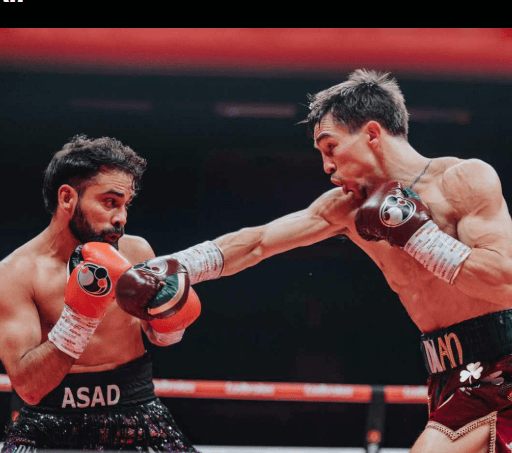
March 7 was an unusually heavy Friday for professional boxing. The show that warranted the most ink was the all-female card in London, a tour-de-force for the super-talented Lauren Price, but there were important fights on other continents.
Brighton
Michael Conlan, who sat out all of 2024 on the heels of being stopped in three of his previous five, returned to the ring in the British seaside resort city of Brighton in a shake-off-the-rust, 8-rounder against Asad Asif Khan, a 31-year-old Indian from Calcutta making his first appearance in a British ring.
Conlan, a 2016 Olympic silver medalist who famously signed with Top Rank coming out of the amateur ranks, is now 33 years old. Against Khan, he was far from impressive, but did enough to win by a 78-74 score and lock in a match with Spain’s Cristobal Lorente, the European featherweight champion.
Conlan, who improved to 19-3 (9), absorbed a lot of punishment in those three matches that he lost. With his deep amateur background, Michael has a lot of mileage on him and he would have been smart to call it quits after his embarrassingly one-sided defeat to Luis Alberto Lopez. His frayed reflexes speak to something more than ring rust. Heading in, Khan brought a 19-5-1 record but had scored only five wins inside the distance.
Conlan vs Khan was the co-feature. In the main event, Brighton welterweight Harlem Eubank, the cousin of Chris Eubank Jr, improved to 21-0 (9 KOs) with a dominant performance over Conlan’s Belfast homie Tyrone McKenna. Eubank was credited with three knockdowns, all the result of body punches, before referee John Latham had seen enough and pulled the plug at the 2:09 mark of round 10. It was the fourth loss in his last six outings for the 35-year-old McKenna (24-6-1).
Harlem Eubank wants to fight Conor Benn next and says he is willing to wait until after his cousin “wipes Benn out.” Chris Eubank Jr vs Benn is slated for April 26 at Tottenham Hotspur Stadium. The North London facility, which has a retractable roof, is the third-largest soccer stadium in England.
Toronto
Local fan favorite Lucas Bahdi and his stablemate Sara Bailey were the headliners on last night’s card at the Great Canadian Casino Resort in Toronto. The event marked the first incursion of Jake Paul’s MVP Promotions into Canada.
Bahdi, who is from Niagara Falls but trains in Toronto, burst out of obscurity in July of last year in Tampa, Florida, with a spectacular one-punch knockout of heavily-hyped Ashton “H2O” Sylva. His next fight, on the undercard of Jake Paul’s match with Mike Tyson, was less “noisy” and the same could be said of his homecoming fight with Ryan James Racaza, an undefeated (15-0) but obscure southpaw from the Philippines who was making his North American debut.
Bahdi vs Racaza was a technical fight that didn’t warm up until Bahdi produced a knockdown in round seven with a sweeping left hook, a glancing blow that appeared to land behind Racaza’s ear. The Filipino was up in a jiff, looking at the referee as if to say, “this dude just hit me with a rabbit punch.”
The judges had it 99-90, 97-92, and 96-93 for the victorious Bahdi (19-0) who was the subject of a recent profile on these pages.
Sara Bailey, a decorated amateur who competed around the world under her maiden name Sara Haghighat Joo and now holds the WBA light flyweight title, successfully defended that trinket with a lopsided decision over Cristina Navarro (6-3), a 35-year-old Spaniard who “earned” this assignment by winning a 6-round decision over an opponent with a 1-4-3 record. The judges scored the monotonous fight 99-91 across the board for Bailey who improved to 6-0 and then returned to the ring to assist her husband in Lucas Bahdi’s corner.
Also
Twenty-two-year-old super bantamweight Angel Barrientes, a Las Vegas-based Hawaii native, delivered the best performance of the night with a one-sided beatdown of Alexander Castellano whose corner mercifully stopped the contest after the seventh round as the ring doctor stood in a neutral corner chatting with the referee.
The gritty Castellano, who hails from Tonawanda, New York, brought an 11-1-2 record and hadn’t previously been stopped. A glutton for punishment, he appeared to suffer a broken orbital bone. Barrientes improved to 13-1 (8 KOs).
The show was marred by an excessive amount of fluffy gobbledygook by the TV talking heads which slowed down the action and made the promotion almost unwatchable.
Cartago, Costa Rica
Fighting in his hometown, super flyweight David Jimenez scored a lopsided 12-round decision over Nicaragua’s Keyvin Lara. The judges had it 120-108, 119-109, and 116-112.
Jimenez, now 17-1, came to the fore in July of 2022 when he upset Ricardo Sandoval in Los Angeles, winning a well-earned majority decision over a 20/1 favorite riding a 16-fight winning streak. That boosted him into a title fight with the formidable Artem Dalakian who saddled him with his lone defeat.
Jimenez’s victory over Lara was his fifth since that setback. It sets up the Costa Rican for another title fight, this time against Argentina’s Fernando Martinez who acquired the WBA 115-pound title in July with an upset of Kazuto Ioka in Japan. Lara, who unsuccessfully challenged Ioka for a belt in 2016, falls to 32-7-1.
To comment on this story in the Fight Forum CLICK HERE
Featured Articles
Price Conquers Jonas on an All-Female Card at Royal Albert Hall

Ben Shalom’s BOXXER Promotions was at London’s historic Royal Albert Hall tonight with an all-female card topped by a welterweight unification fight between WBC/IBF belt-holder Natasha Jonas and WBA champion Lauren Price.
Liverpool’s Jonas, who turns 41 in June, has had a sterling career, but Father Time has caught up with her. The 30-year-old Price, an Olympic gold medalist, had faster hands, faster feet, and hit harder. The classy Jonas (16-3-1) acknowledged as much in her post-fight interview: “She beat me to the punch every time.”
The scores were 100-90, 98-92, and 98-93.
In advancing her record to 9-0 (2), Price built a strong case that she is the best fighter to come down the pike from Wales since Joe Calzaghe. As for her next bout, she hopes to fight the winner of the March 29 rematch in Las Vegas between Mikaela Mayer and Sandy Ryan. That match, with all of the meaningful welterweight hardware at stake, would be a hot ticket item if potted in Cardiff.
Semi-wind-up
Caroline Dubois staved off a late rally to successfully defend her WBC lightweight title with a majority decision over South Korea’s spunky Bo Mi Re Shin. The judges had it 98-92, 98-93, and 95-95. Although the 95-95 tally by the Korean judge was quite a stretch, Shin performed far better than the odds – Dubois was a consensus 35/1 favorite — portended.
Dubois, a 24-year-old Londoner trained by Shane McGuigan, is the sister of IBF heavyweight title-holder Daniel Dubois. Reportedly 36-3 as an amateur, she advanced her pro record to 11-0-1 (5). Heading in, Shin (18-3-3) had won nine of her previous 10 with the lone setback coming via split decision in a robust fight with Belgium’s Delfine Persoon in Belgium.
Other Bouts of Note
Kariss Artingstall returned to the ring after a 14-month absence and scored a unanimous decision over former amateur rival Raven Chapman. The scores were 98-91, 97-92, 96-93.
The prize for Artingstall, who happens to be Lauren Price’s partner, was the inaugural British female featherweight title and a potential rematch with Skye Nicolson who would relish the chance to avenge her last defeat, a loss by split decision to Attingstall in the quarterfinals of the Tokyo Olympics. Nicolson, who was part of tonight’s broadcast team, defends her title later this month in Sydney against Florida’s Tiara Brown.
It was the first 10-rounder for Artingstall (7-0). Chapman (9-2) had an uphill battle after Artingstall decked her in the second round with a straight left hand.
In a mild upset, Jasmina Zopotoczna, a UK-based Pole, won a split decision over Chloe Watson, adding Watson’s European flyweight title to her own regional trinket. One of the judges favored Watson 97-93, but each of his colleagues had it 96-95 for the Pole. Although there was no great furor, the verdict was unpopular.
Zapotoczna, who fought off her back foot, improved to 9-1. It was the first pro loss for Watson who is trained by Ricky Hatton.
To comment on this story in the Fight Forum CLICK HERE
Featured Articles
Avila Perspective, Chap. 316: Art of the Deal in Boxing and More
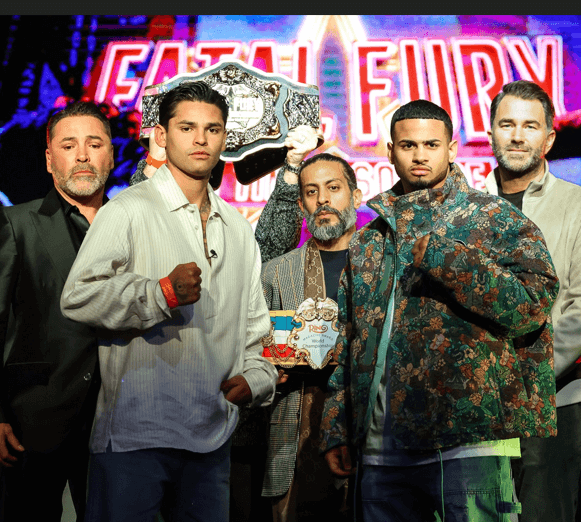
So, they want to save boxing?
A group of guys with recent ties to the sport of boxing and bags of money suddenly believe they can save a sport that is older than any other sport since the dawn of mankind.
Boxing is the oldest sport.
When cavemen roamed the planet, you can believe one tribe bet another tribe their guy could whip the other guy. Thus began the sport of boxing. There was no baseball, soccer or horse racing.
Even the invention of the wheel was still a few generations away when men were duking it out with other men for sport.
Throughout history mentions of one man fighting another man without arms are written in the Tales of Ulysses and other literary references.
Boxing will never die. Period.
Here is the reason why.
Boxing requires only two men in their underwear with no weapons and no requirement of classes in jujitsu, kickboxing, wrestling or advance training facilities. You can prepare in your backyard with one heavy bag and a pair of boxing gloves. It’s simple.
MMA, on the other hand, requires money.
Boxing is for the poor. Any kid can walk into a gym and begin training. When they become adults, then they start paying to use the gym.
Don’t let people fool you and tell you “boxing is dying.”
People have been saying those same words since John L. Sullivan in the late 1800s. You can look it up.
The phrase “boxing is dying,” is said by people who want you to pay them money to save it. Kind of sounds like the guy currently sitting in the White House who is going to save America by firing Americans from their jobs and allowing Russia to take over Ukraine.
Don’t believe these people.
Boxing does not need saving.
Why would Dana White, who has stated for decades that MMA is bigger than boxing, though no MMA fighter can equal the purses of a Saul “Canelo” Alvarez or Tyson Fury, why is he involved in boxing?
There is big money to be made in boxing, especially with internet gambling sites being allowed all over the world. And boxing is popular worldwide. MMA is not.
More people know who Canelo is than UFC’s Alex Pereira.
I respect the UFC fighters. They put in hard work and battle injuries throughout their careers. But MMA is simply not as big as boxing. The purses of MMA fighters at the top level don’t come close to boxing’s top money earners.
Why did Conor McGregor, Nate Diaz and others quickly switch to boxing when called?
The money in boxing is much bigger.
Follow the money.
NYC
A rumble is planned for Times Square in New York City.
Vatos from Southern California are fighting dudes from Nevada and Brooklyn. Sounds like a script from the Gangs of New York.
Where is Leonardo DiCaprio when you need him?
Ryan “KingRy” Garcia (24-1, 20 KOs) will meet Rollie Romero (16-2, 13 KOs) in a welterweight match set for May 2, on Times Square in mid-Manhattan. This is one of three marquee bouts planned to be streamed on DAZN.
Others matched will be Arnold Barboza (32-0, 11 KOs) versus super lightweight titlist Teofimo Lopez (21-1, 13 KOs), and Devin Haney (31-0, 15 KOs) against Jose Carlos Ramirez (29-2, 18 KOs) in a welterweight contest.
This is the proposed match by The Ring magazine backed by Turki Alalshikh who, along with Golden Boy Promotions and Matchroom Boxing, is sponsoring this fight card.
It was also announced that Alalshikh, TKO Group Holdings, and Sela are forming a promotion company.
TKO owns UFC and WWE.
SoCal Fights
Southern California will be busy with boxing cards this weekend.
This Thursday, March 6, is Golden Boy Promotions with a boxing card featuring Manny Flores (19-1, 15 KOs) versus Jorge Leyva (18-3, 13 KOs) in a super bantamweight match at Fantasy Springs Casino. DAZN will stream the boxing card from Indio, California.
On Saturday, March 8, the Fox Theater in Pomona, California hosts a boxing card featuring super middleweights Ruben Cazales (10-0) vs Adam Diu Abdulhamid (18-16). Also, super featherweights Michael Bracamontes (10-2-1) meets Eugene Lagos (16-9-3) at the historic venue promoted by House of Pain Boxing.
On Saturday March 8, Elite Boxing hosts a boxing card at Salesian High in East Los Angeles featuring East L.A. native Merari Vivar (8-0) against Sarah Click (2-8-1) and several other fights.
On Saturday, March 8, an event hosted by House of Champions features top contenders Joet Gonzalez (26-4) vs Arnold Khegai (22-1-1) in a featherweight main event at Thunder Studios in Long Beach, Calif.
A Big All-Female Card in London
On Friday, March 7, the historic Royal Albert Hall in the Kensington borough of London will host an all-female card with two world title fights including a unification fight in the welterweight division.
Natasha Jonas (16-2-1) and Lauren Price (8-0) meet 10 rounds for the IBF, WBC, and WBA belts.
Jonas, 40, the current WBC and IBF titlist, recently defeated Ivana Habazin and before that edged past Mikaela Mayer in a win that could have gone the other way very easily. She will be facing Price, an Olympic gold medalist and current WBA and IBO titlist.
Price, 30, hails from Wales and has an aggressive pressure style that saw her win a battle between punchers with a third-round knockout of Colombia’s Bexcy Mateus this past December in Liverpool. Before that she defeated the always tough Jessica McCaskill.
In the co-main event, lightweights Caroline Dubois (10-0-1) and Bo Mi Re Shin (18-2-3) meet for the WBC world title.
Me Re Shin, 30, fights out of South Korea and has knockout power. She was one of only two fighters to stop Venezuela’s Ana Maria Lozano who has 38 pro fights. That says something. She lost a split decision to Delfine Persoon in Belgium. That really says something.
Dubois had two competitive fights, first, against Jessica Camara that ended in a technical draw due to a clash of heads. Before that she defeated Maira Moneo. Dubois has very good talent and is still young at 24. Is she ready for Mi Re Shin?
Times Square photo credit: JP Yim
Fights to watch:
Thurs., March 6: DAZN, Manny Flores (19-1) vs. Jorge Leyva (18-3)
Fri., March 7: free on DAZN, Lucas Bahdi (18-0) vs. Ryan James Racaza (15-0)
To comment on this story in the Fight Forum CLICK HERE
-
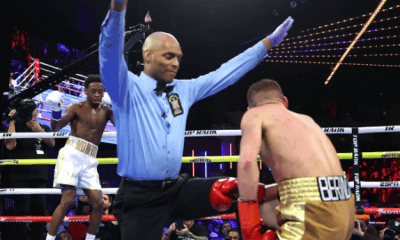
 Featured Articles3 weeks ago
Featured Articles3 weeks agoResults and Recaps from Madison Square Garden where Keyshawn Davis KO’d Berinchyk
-

 Featured Articles7 days ago
Featured Articles7 days agoLamont Roach holds Tank Davis to a Draw in Brooklyn
-
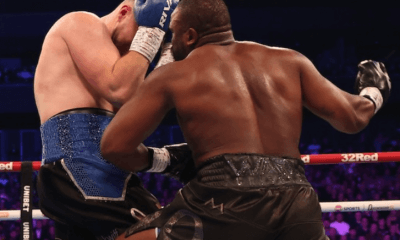
 Featured Articles4 weeks ago
Featured Articles4 weeks agoMore ‘Dances’ in Store for Derek Chisora after out-working Otto Wallin in Manchester
-

 Featured Articles2 weeks ago
Featured Articles2 weeks agoGreg Haugen (1960-2025) was Tougher than the Toughest Tijuana Taxi Driver
-
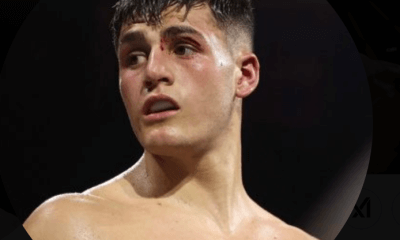
 Featured Articles3 weeks ago
Featured Articles3 weeks agoVito Mielnicki Hopes to Steal the Show on Friday at Madison Square Garden
-
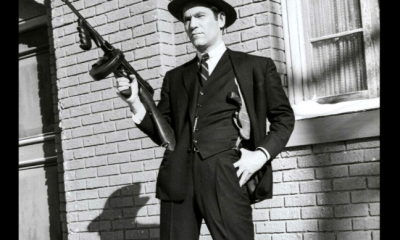
 Featured Articles4 weeks ago
Featured Articles4 weeks agoWith Valentine’s Day on the Horizon, let’s Exhume ex-Boxer ‘Machine Gun’ McGurn
-
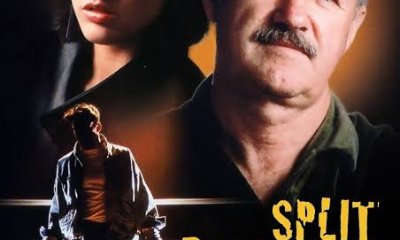
 Featured Articles1 week ago
Featured Articles1 week agoGene Hackman’s Involvement in Boxing Went Deeper than that of a Casual Fan
-
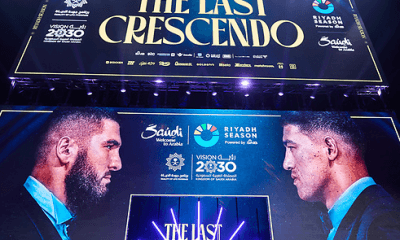
 Featured Articles2 weeks ago
Featured Articles2 weeks agoThe Hauser Report — Riyadh Season and Sony Hall: Very Big and Very Small





















